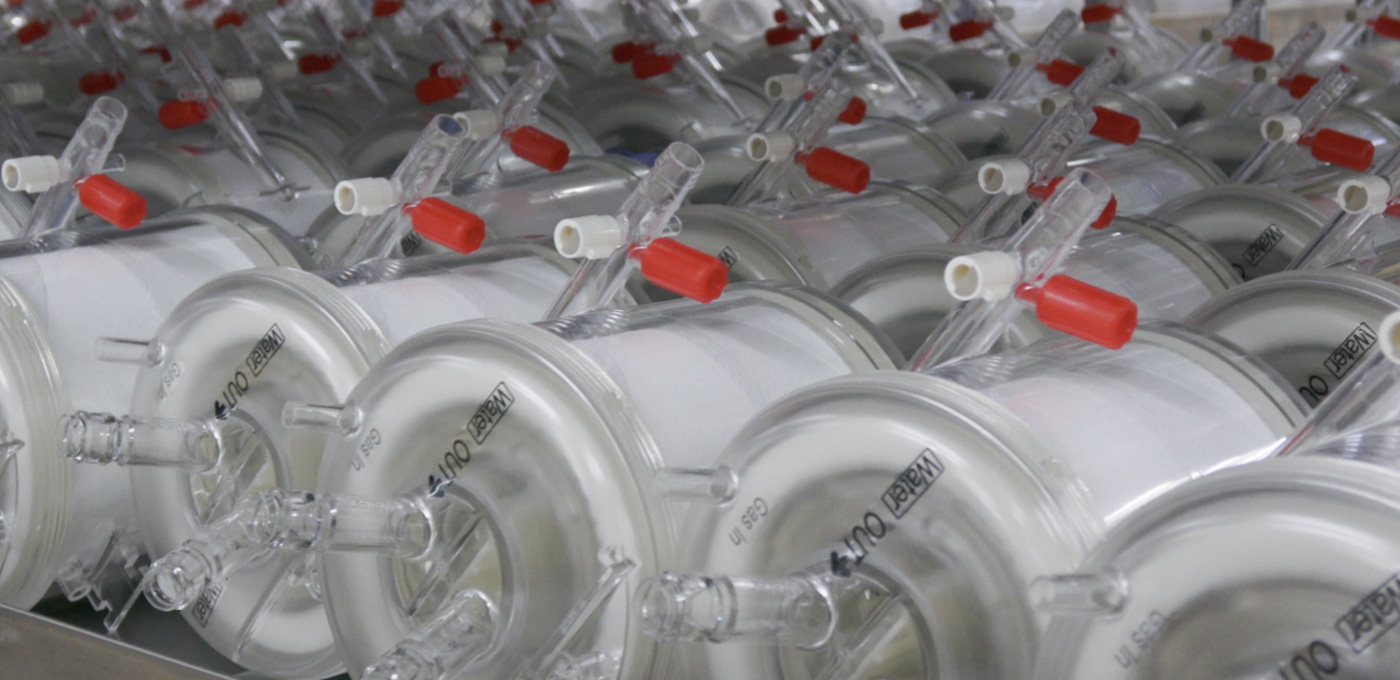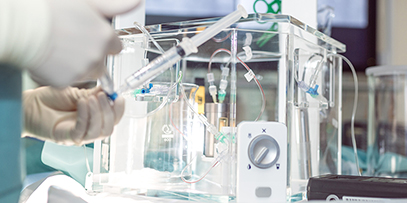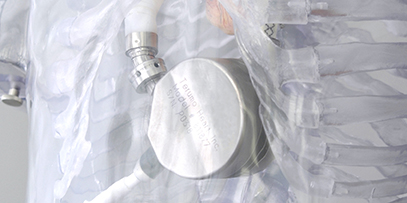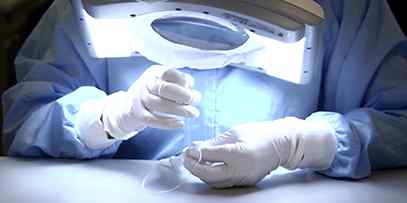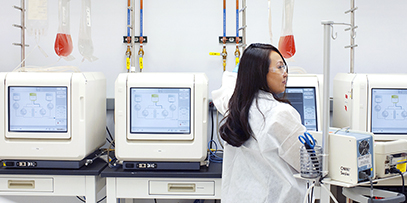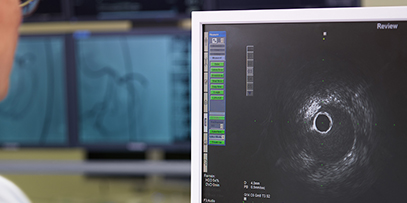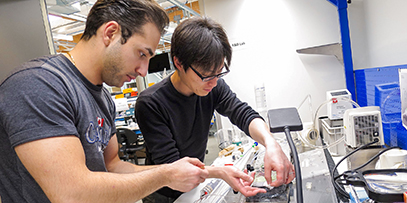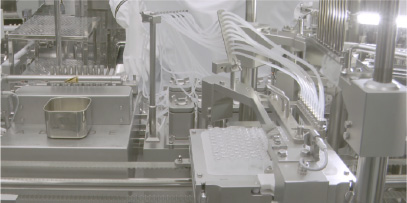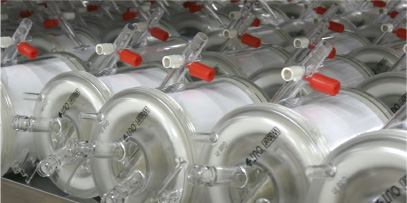 Top
TopReducing burden on patient blood during cardiovascular surgery by improving oxygenators
Terumo provides heart-lung machines that are used to circulate blood through the body in place of the heart during cardiovascular surgery, and hollow-fiber oxygenators that exchange oxygen for carbon dioxide in place of the lungs. Terumo developed the world's first microporous hollow fiber membrane oxygenator in 1982. Over more than 35 years since then, Terumo has made numerous technology improvements as the devices have sustained patient life during surgeries.
A heart-lung machine circulates all of a patient's blood, while the oxygenator performs blood gas exchange. A vital aspect of circulating this way is to prevent the occurrence of what is called blood "denaturation." Blood quickly denatures when it comes into contact with air or foreign materials. That is why it is important to minimize the surface area of the circulation path that comes into contact with blood, and to improve the blood compatibility of device materials. Therefore, the technological challenges of oxygenators are to improve blood compatibility of materials and to improve gas exchange efficiency (exchange enough gas with the least surface contact).
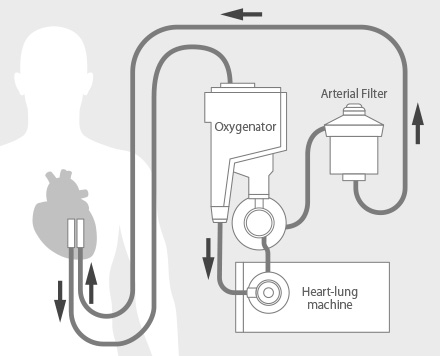
In addition, the inside of heart-lung machine systems, including the oxygenator portion, must all be purged of air before use, by filling with saline solution. The larger the volume of this saline solution, the more diluting effect will occur in the patient's blood, decreasing the blood's ability to carry oxygen and leading to the need for transfusion and a higher infection risk, as well as longer post-operative recovery time. To minimize the impact on blood, the volume of liquid initially run through the device (priming volume) must be reduced. This priming volume has an especially big impact on small children and other patients with small bodies. Blood coagulation and air bubbles also have serious impact on blood when they occur as blood flows through the device.
Terumo has worked tirelessly over decades at technological development to overcome each of these challenges.
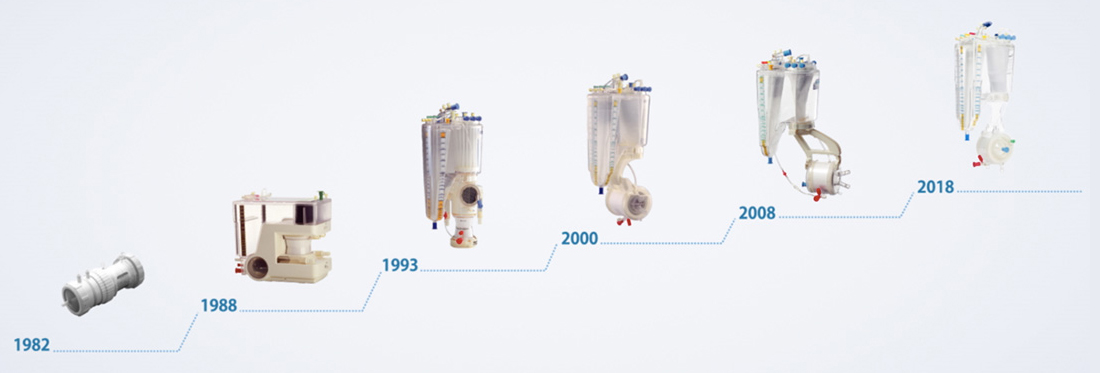
When Terumo released the world's first hollow-fiber oxygenator, in 1982, the device used narrow threads called "hollow fibers," which were made by textile manufacturers from highly porous membrane material. Blood flowed through the inside of these hollow fibers in a style called "internal perfusion." However, high pump pressure was required to make viscous blood pass through the narrow fibers; this meant that a different circulation path than usual was required to transfer the blood, so the overall reception in medical settings less than positive.
Also, reports indicated that the hollow fiber membrane would sometimes leak blood during circulation. The fibers were manufactured using a method called "stretching," which resulted in the pores of the fibers lining up straight along the fiber wall. This made it easier for blood to leak, and when the fiber was pulled it would easily tear.
Terumo-developed and manufactured hollow fiber and external perfusion opened the way
To achieve a next-generation oxygenator that did not leak blood, Terumo decided to internally manufacture its own fibers. Using the existing hollow fiber manufacturing expertise it had developed, the company adopted the oxygenation method of "phase separation." This effort led to successful development of a hollow fiber that was stronger and had lower risk of blood leakage thanks to net-shaped pores.
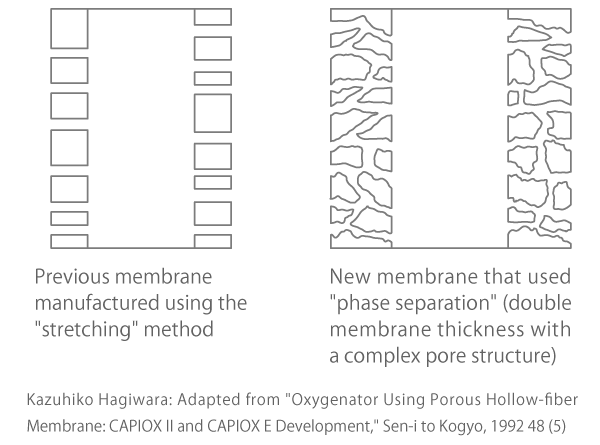
The next goal was to make a product that could utilize the external perfusion method for blood flow, which would make it usable with the same circulation systems as previous “air-bubble” style oxygenators. However, adopting this style posed a technology challenge: Blood could not be circulated under pressure to the oxygenator, so blood would not come into contact evenly with the fibers, leading to reduced gas exchange performance.
One technology that helped to solve this problem was to give the fibers slight "waves" through a method called "crimping." This way, when the fibers were placed inside the oxygenator housing, they would naturally spread out and maintain optimal distance without clumping together, enabling them to come into maximal contact with the blood. This newer oxygenator that used external perfusion, in which blood randomly flowed across fibers to oxygenate blood, achieved a gas exchange performance six times higher than the previous product that used internal perfusion, transforming it into a flagship model that took a 20% market share.
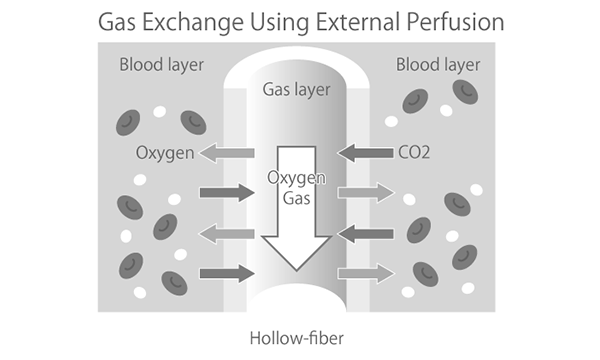
Aiming to be world standard, one technological innovation at a time
In the subsequent oxygenator history, Terumo worked to become the world standard through numerous technological innovations:
- - To reduce required blood priming volume, incorporate the blood reservoir and arterial filter (which returns blood to the body) inside the main unit
- - To reduce product size, develop knitting technology to place hollow fibers arranged in straight lines like yarn inside a cylindrical housing
- - To prevent impact on blood when it contacts the inside of the circulation path, and to improve biocompatibility, develop a unique coating that utilizes both hydrophobic and hydrophilic characteristics
- - Further improve miniaturization technology to enable development of a neonatal oxygenator
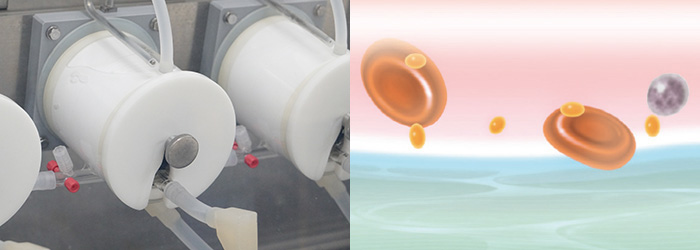
Toward technology to support patients with heart disease, creating the next-generation oxygenator
Today, Terumo oxygenators are used around the world in surgical settings. As the only global oxygenator manufacturer with internally developed and produced hollow fiber, Terumo will continue to strive toward even greater new technology. The company will maintain the high level of performance while achieving lower prime volume by developing the next series of oxygenator with even narrower and thinner hollow fiber material.
Terumo will contribute to reduced burden on patients who undergo cardiovascular surgery, by continuing its endless pursuit of better technology.


